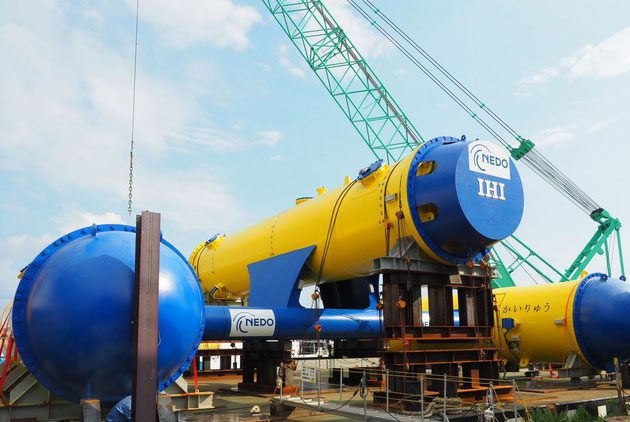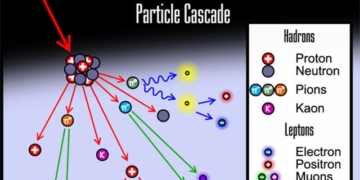Japan has successfully tested a giant underwater turbine system that harnesses energy from deep ocean currents and converts it into a stable, reliable power source.
For over a decade, Japan’s heavy machinery manufacturer IHI Corp has been researching and developing a deep-sea turbine for energy extraction, according to Bloomberg.
This system resembles a giant aircraft, featuring two counter-rotating turbine blades, with the center “fuselage” housing the buoyancy adjustment system.

IHI Corp’s giant Karyu power-generating turbine – (Photo: IHI Corp).
The machine, named Kairyu, weighs 330 tons and is designed to be anchored to the seabed at depths of 30-50 meters.
According to commercial production plans, the turbines will be placed in the Kuroshio current, one of the strongest ocean currents in the world, which runs along Japan’s eastern coast and transmits electricity through underwater cables.
Ken Takagi, a professor of ocean technology policy at the University of Tokyo, stated: “Japan has an advantage in accessing strong ocean currents.”
The New Energy and Industrial Technology Development Organization (NEDO) of Japan estimates that the Kuroshio current could generate 200 gigawatts, approximately 60% of Japan’s current electricity generation capacity.
The advantage of ocean currents is their stability. Their flow shows little variation in speed and direction, providing a power coefficient – a measure of how frequently the system generates power – of 50-70%. This figure is quite impressive compared to about 29% for onshore wind energy and 15% for solar energy.
In February, the research team tested the system in the waters around the Tokara Islands in southwestern Japan. The team suspended the Kairyu system from a ship, and the generated current was also directed back to the vessel.
The tests demonstrated that the Kairyu system could produce a stable output of 100 kilowatts as expected.
The company currently plans to scale up the system to 2 megawatts, which could enter commercial operation in the 2030s or later.
However, the potential for ocean energy depends on factors such as location, current strength, access to the grid or market, maintenance costs, transportation, marine life, and other elements.
With the costs of wind energy, solar energy, and storage batteries decreasing, IHI will also need to prove the cost competitiveness of ocean-generated electricity.
Currently, IHI aims to produce electricity at a cost of 20 yen per kilowatt from large-scale deployment. This price remains high compared to about 17 yen for domestic solar energy and approximately 12-16 yen for offshore wind energy.
If successful at scale, deep ocean currents could play a significant role in providing green energy, contributing to global efforts to phase out fossil fuels.




















































